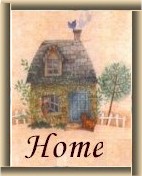Zion Lutheran Church
Built in 1862, the architect left the site before the building was completed to fight in the Civil War.
Chicago was incorporated as a city in 1837. There was a medical
school, a weekly newspaper, and a few churches. There were Roman
Catholic, Presbyterian and Methodist churches, but no Lutheran
Church.
German immigrants were settling in an area west of Chicago called Dunklee's Grove. (This area became what we now know as Bensenville and Wood Dale.) These settlers shared a common language, a common past, common problems, and common desires. Though they were not united in faith, they came together to form a church – The German United Reformed Lutheran Church of Addison, DuPage County, Illinois.
The early settlers met in their homes. Probably in 1837, work was seriously begun to establish a permanent church. We cannot pinpoint the exact day or month or year that Zion was born, but there is good reason to believe that services were held regularly in 1837 and that a pastor was first installed in 1838.
In 1847, there was a split between the Lutheran and the Reformed. Those loyal to the Reformed Doctrine formed St. John’s Church, now standing on Route 83 near Foster Avenue.
In 1848, the name was changed to the German United Lutheran Church of Addison, DuPage County Illinois. (The name "Zion" would not be added to the name of the congregation until 1895.) The congregation purchased 48 and 87/100 acres from Louis Schmidt. The cost was $200.00. In April of 1856 the congregation joined the Missouri Synod. In 1859, the formation of Immanuel Church was a result of another split.
The parish boundaries were huge by today’s standards. On the south, the boundary was a mile past Roosevelt Road. On the north it was past Oakton street. The DesPlaines River was the boundary to the east, and westward it was beyond Schaumburg. People came to church by the wagon-full. Those who lived a great distance would pick up others along the way. The women and children would be in the wagon singing German hymns and the men would be walking behind discussing the problems of the week.
The parish was too large and there was only one central school. The congregation wanted schools to be closer and more convenient. The parish was divided into school districts. In the course of time these schools became congregations. Churches were built and pastors were called. The congregations that grew from these schools were called: St. Paul’s in Addison, St. Luke’s in Itasca, Immanuel in Elmhurst, Apostle’s Church in Leyden, Trinity Church in York Center, and Immanuel in Proviso.
In the 1860's the members of Zion had two dreams. First they wanted a new building. In 1862, the old church building was sold for $100.00 and a new one was built. It cost $10,000 but it was a spectacular building. It still is a landmark that dominates the area. Below is a photo of the interior of the church in 1905. The church was strikingly beautiful. It was white trimmed with gold. There was a large altar. Above the altar was a crucifix and above the crucifix was the pulpit. Unfortunately, in 1937 a bolt of lightening from a summer thunderstorm caused a fire that destroyed the interior. Without a doubt, the opinion of the members was that the new furnishings could not be compared to what had been swept away in the ashes.
The second dream of the Zion congregation was to help the Lutheran Church establish a Teachers College. In 1863, Zion offered to give free land and financial backing to the Synod if the Teachers College would be built in the neighborhood of Zion Church. The land that was available was behind the church, what is now White Pines Golf Club. The Synod wanted land over in Addison next to the West District School. Zion paid $10.00 for George Bartling's pasture and the 14 acres adjoining it and the college was established in Addison.The congregation donated an additional $3,128.00 and this was only one year after the new church was built. The Teachers College remained in Addison until 1913. It was moved to 7300 Augusta in River Forest and is called Concordia College.
The first regular English Worship began in 1924. It was held on the second Sunday of every month in the evening. The German language would continue in regular use until the attendance at German Service dropped below 25 persons for three consecutive Sundays. This took place on May 10th, 1959.
In 1948, a modern school building was dedicated. At this time, there was one teacher and sixteen students. The building also served as a Parish Hall. In 1958, a large addition was added. It included classrooms, offices, a kitchen and a regulation sized gymnasium. By 1962 there were seven teachers and 175 students.
This information was taken directly from the history of the first 125 years of Zion Church in Bensenville. The year was 1963. For more information about Zion and additional photos, ask a reference librarian for Local History folder number 31.
Read a book! The History of Zion Lutheran Church:1838-1978 can be found on the shelf at 977.324 Miles. A librarian would be delighted to assist you!

